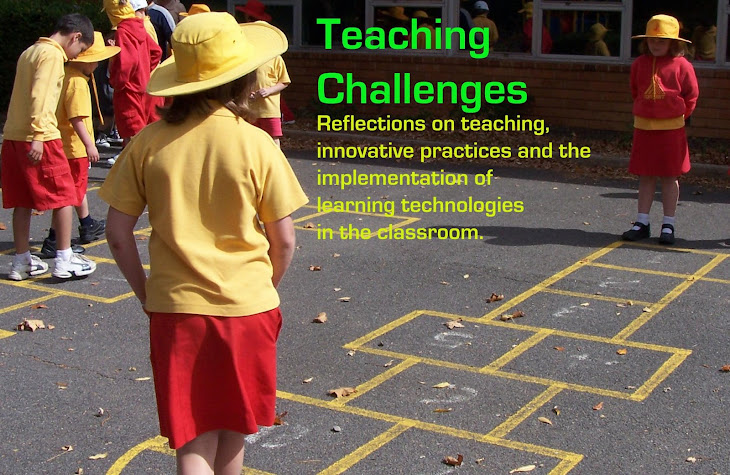Introducing Aurasma
Put simply, Aurasma is the prettier version of a code reader with augmented reality elements. When you point your device at a trigger image (with Aurasma open), it performs an action that has been determined by the creator of the 'aura'. Unlike the Q code, however, in order to view an aura, the user must first follow the creator of the aura. Aurasma's appeal is in the 'magic' of finding hidden treasures in the world around us.
One of my coworkers has been trying to convince me to look into Aurasma for quite some time, but I just hadn't found the time. However, on a sick day recently I decided to give it a go, and was excited by the possibilities. It took a good day to get my head around both the Aurasma App and Aurasma Studio, but from that I developed a plan to implement the technology initially in Maths rotations, with further plans for Literacy later in the year. Initially I am working to create resources for students to access, but as we progress I would like to provide ways for students to create their own auras.
One of my coworkers has been trying to convince me to look into Aurasma for quite some time, but I just hadn't found the time. However, on a sick day recently I decided to give it a go, and was excited by the possibilities. It took a good day to get my head around both the Aurasma App and Aurasma Studio, but from that I developed a plan to implement the technology initially in Maths rotations, with further plans for Literacy later in the year. Initially I am working to create resources for students to access, but as we progress I would like to provide ways for students to create their own auras.
Basic terminology
Trigger - the image that Aurasma recognises which then triggers an action.
Overlay - the action that takes place when triggered. This could be an image, video or website.
Aura - the combined trigger with overlay, which someone can experience.
Channel - a collection of auras. This may be public, for others to find through search, or private.
Trigger - the image that Aurasma recognises which then triggers an action.
Overlay - the action that takes place when triggered. This could be an image, video or website.
Aura - the combined trigger with overlay, which someone can experience.
Channel - a collection of auras. This may be public, for others to find through search, or private.
Possible application
Maths
Maths
- pop up questions for items in a grocery store catalogue. This can allow for opportunities to differentiate.
- video teacher explanation for Maths questions posted around the room - to be used for self-checking
- pretend notes and coins with information about that denomination, and or questions relating to it.
- students create their own word problem to go with a number sentence and demonstrate how to solve it. Other students can then view these.
- students order images by their perceived capacity and then scan the image to see a video of the measurement to check their estimation. Groups could be responsible for photographing and recording the measurement of one container.
- posters of shapes or solids with a video of students labelling the parts and describing the features. These could be displayed in room.
- students print graphs of collected data and attach an overlay explaining their findings. To extend, there could be a pop-up questionnaire for people to share their opinions.
Literacy
- Book reviews which are displayed when the cover is used as trigger image.
- Students reading a short story aloud when the cover is used as trigger.
- Comprehension questions which pop up on some pages when students are reading. Students can record their thoughts to a group wall using Padlet when they tap on a specified area of the page. (Need Aurasma studio for this idea.)
- Book Study - students could add graphic organisers (eg. story map, sociogram, Venn Diagrams) to the texts they are reading and make book marks to show other readers which pages the Aurasma links are on.
- Character profiles could be linked to the cover or pages of a text.
Other
- use artwork as a trigger image and a student explanation as the overlay
- include Aurasma items in newsletters or classroom reflections
Some Concerns
As always, the technology provides a fun way to engage in learning, but needs to be monitored to ensure that quality work is still produced and a high level of accountability is maintained. Any use of technology is costly in terms of time and effort, particularly when learning something new. Some of the difficulties I have found so far:
- Aurasma Studio and the Aurasma App offer different options in terms of setting up channels and adding overlays. Once you know how they both work you can make decisions to use the one most practical for the situation.
- There is a time delay between the creation of an aura and its availability to other users. Therefore, you may not be able to create and view items in the one lesson period.
- It may take a little time for students to find and follow you the first time.






No comments:
Post a Comment
I'd love to hear your thoughts and questions. Please don't be shy...
:)